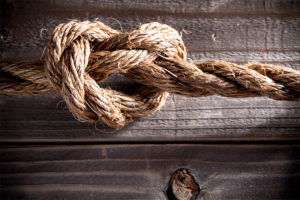Clearing the PIPES in the Male Reproductive System

This case of the month involves an actual patient from The Turek Clinic.
He was 32 years old and had been having trouble conceiving for three years. His history was entirely unremarkable except for one thing: he had had a pain in his right testicle immediately after ejaculation for as long as he could remember. His evaluation showed no sperm in the ejaculate (azoospermia) on several occasions. But the real clue here was that his ejaculate volume was always low, half a teaspoon or less. “It has been that way since I can remember, Doc. Is that normal?” he asked.
Blocked Pipes
No, it’s not. Neither the pain nor the low volume. Until further notice, this is a classic case of ejaculatory duct obstruction. His sperm production is likely totally normal, but there is a simple plumbing problem. His pipes are blocked right where the ejaculate enters the urethra (urine tube) near the prostate. Unlike many other men with azoospermia, this man’s engine’s (sperm production) is just fine, but his exhaust pipes (ejaculatory ducts) are blocked. Curable? You bet.
What Causes Blockages?
Diseases like prostatitis and urinary tract infections can lead to inflammation, which can block the ducts. For some men, ejaculatory duct obstruction is a congenital condition — from cysts or anatomical variation. Usually, the cause of the obstruction can be determined by ultrasound. But, it is not necessary to know the exact cause in order to treat it.
Evolution of Thought
I have pondered and published on this uncommon cause of male factor infertility for almost two decades. Here’s a quick account of how my thinking has evolved:
- 1996 – I examined just how good current treatments were. My first paper showed that in many cases, we were off the mark as surgery wasn’t helping everyone.
- 1996 – To get some answers, I went really old school and examined the ejaculatory ducts of human cadavers and fresh surgical specimens. This taught me a lot about the anatomy (structure) of this system.
- 1998 – To get more answers, I developed an animal model of this problem and learned a lot more about the physiology (function) of how this system works.
- 2004 – I compared all of the current methods used to make the diagnosis and worked out which of them was the best test for this condition.
- 2008 – Not happy with the current testing, I invented a new and improved way to make the diagnosis that led to higher surgical cure rates. I still use this to this day.
Getting back to basics is a tried-and-true way to advance medicine. Anatomical studies, such as that begun by Vesalius in 16th century, still play a role in modern medicine. And so do physiology studies as first elucidated by Galen in the 1st century AD. I am truly honored to carry on with the hallowed traditions of our medical forefathers and push the envelope of modern medicine at the same time.
Seek Treatment
After years of evaluating and improving minimally invasive techniques to diagnose and treat ejaculatory duct obstruction, I still rely on TURED (transurethral resection of the ejaculatory ducts) as the most effective treatment. During this one-hour procedure, I remove scar tissue or stones near the ejaculatory ducts or unroof cysts that are compressing them to help clear the pipes. Over 80% of my patients produce better quality semen after TURED.
To discuss this procedure with me, please schedule an appointment.









